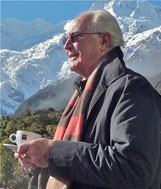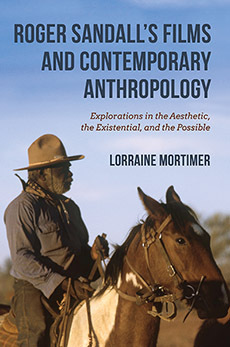It’s a great collection—perhaps the finest display of Australian painting the country has. In Melbourne, at the National Gallery of Victoria, you can see examples of the late-19th-century work that fixed forever a vision of Australian pioneering life: Arthur Streeton’s landscapes, Tom Roberts’ Shearing the Rams, and Frederick McCubbin’s allegory of settlement, The Pioneer.
These paintings are dazzlingly clear in style and meaning. Can’t the public view them in peace? Can’t visitors be assumed to be mature? Can’t the gallery let people think for themselves?
Not in Melbourne, where the didactic impulse is overwhelming, and captive citizens receive uplifting instruction the moment they step in the door. McCubbin’s triptych shows a settler family arriving in the empty bush; carving out a homestead; and then a distraught widower beside the grave of his wife—while the city of Melbourne shines distantly in the background as a testament to settler endeavour.
And the artist’s meaning is wholly unmysterious. In a 1904 diary entry McCubbin writes that “as I was walking to the top of the hill and went into the bush to look at the view (I found) a pioneer grave long overgrown. Now, as people walk into the bush, they can remember the pioneers that opened up the land”. For McCubbin, opening up the land and building cities were things to be proud of.
But of course none of this will do. And McCubbin’s sentiments are downright embarrassing. In order to make the exhibition serve a politically correct purpose, the gallery curator, like some Soviet-era commissar, instructs his visitors how to “read” The Pioneer, suggesting inter alia that they ask “How and for what reasons was the land cleared and whose land was it? To what degree did early settlers understand the harsh eco system? How can we best balance agriculture and conservation in the future?” In short: brains washed here.
Elsewhere in the gallery are some early works showing encounters with native peoples. Two paintings by John Glover and Robert Dowling feature aborigines either individually in the landscape or as documentary representations of a clan. Glover presents something of an indigenous New World arcadia, and the Gallery commissariat hastens to explain that his vision was all a fantasy—“a world far removed from the reality” of the aboriginal experience of colonization.
Robert Dowling, in contrast, offers a sympathetic if romanticized portrait of a Tasmanian aboriginal family. Its members seem both noble and stoical in the face of their encounter with the forces of colonial settlement; at worst the painting might be seen as romanticizing the noble savage.
But no—things are far worse than that. Settlement involved violence. Ergo, paintings like this from the era of settlement involved violence. And presumably the luckless artist with his brush and palette was unknowingly engaged in violence too. Attached to Dowling’s portrait we read without comment the following quotation from the high priest of Orientalism:
The act of representing others almost always involves violence of some sort to the subject as well as a contrast between the act of representing something and the calm exterior of the representation itself.
Taken from an interview with Edward Said titled The Shadow of the West (1990), the quotation maintains that the very act of representation is an act of violence. But if so, isn’t the National Gallery of Victoria in a bit of a dilemma? Should taxpayer’s money be spent on wall after wall of representations, some large, some small, and some much better than others, that according to Said are essentially celebrations of violence—a macabre dancing on the graves of the dead?

 An Australian writer living in Sydney, Roger Sandall is the author of The Culture Cult (2001), a study of romantic primitivism and its effects. His work has appeared in a number of places including Commentary, The American Interest, Encounter, The New Criterion, The American, Sight and Sound, Quadrant, Art International, The New Lugano Review, The Salisbury Review, Merkur, Mankind, Visual Anthropology, and Social Science and Modern Society.
An Australian writer living in Sydney, Roger Sandall is the author of The Culture Cult (2001), a study of romantic primitivism and its effects. His work has appeared in a number of places including Commentary, The American Interest, Encounter, The New Criterion, The American, Sight and Sound, Quadrant, Art International, The New Lugano Review, The Salisbury Review, Merkur, Mankind, Visual Anthropology, and Social Science and Modern Society.